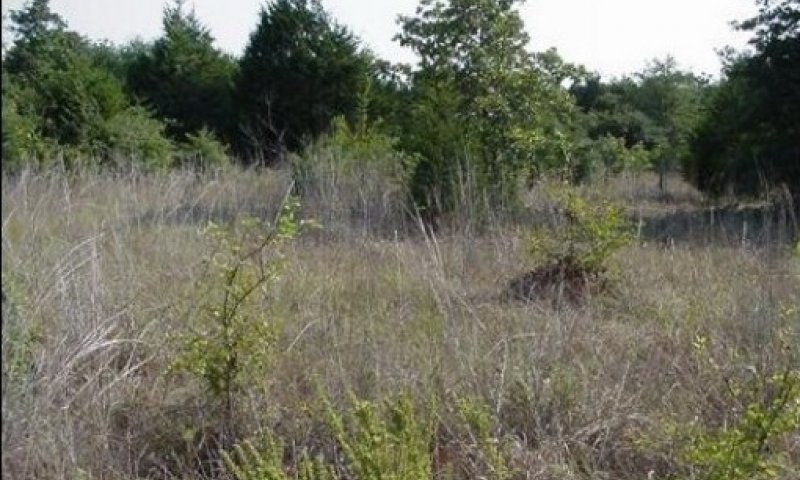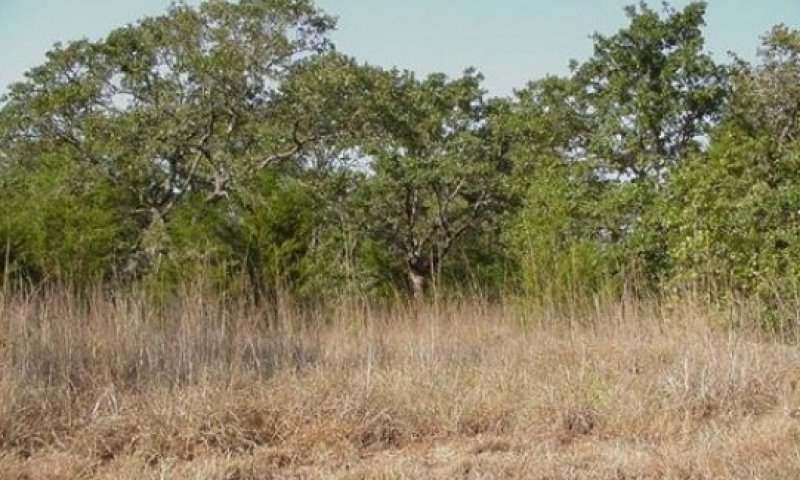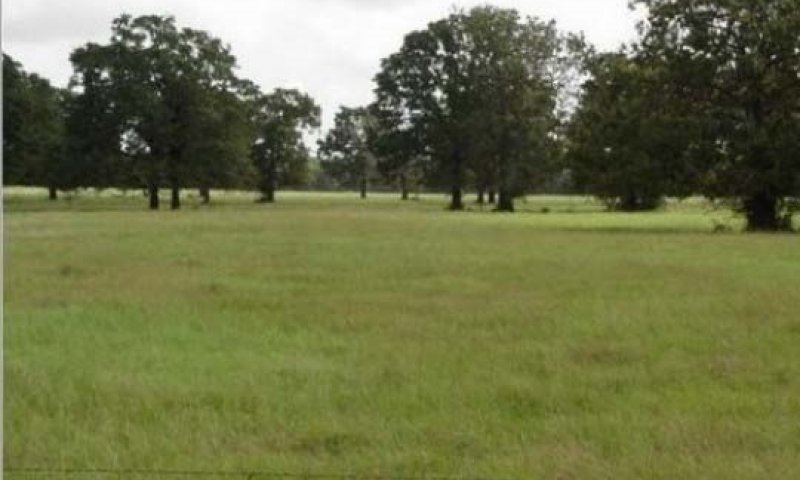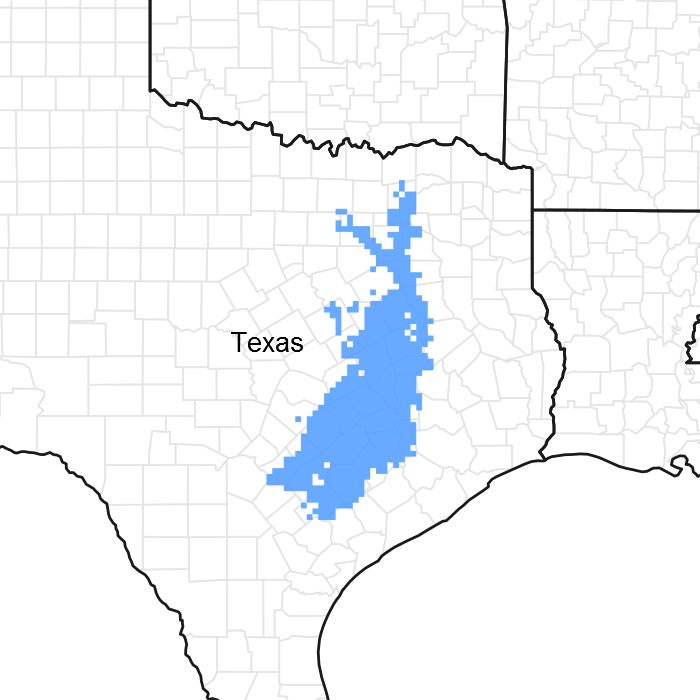Ecological dynamics
The Sandy site evolved and was maintained by the grazing and herding effects of native wild large ungulates, periodic fires, and extreme climatic fluctuations. Conversion of this site to cropland and the subsequent abandonment of cropping removed the natural native vegetation, organic matter, and fertility and allowed woody species to dominate the site. Continuous grazing by confined domestic livestock and the suppression of fire on non-cropland sites removes little bluestem (Schizachyrium scoparium), Indiangrass (Sorghastrum nutans), switchgrass (Panicum virgatum), and preferred forbs such as tephrosia (Tephrosia spp.) and prairie clover (Dalea spp.).
Less productive perennial and annual grasses and forbs will replace these plants. Years of continuous grazing generally lead to periods of prolonged rest for recovery of the perennial herbaceous plant component. These prolonged rest periods with no fire or brush management lead toward a community dominated by woody species such as winged elm (Ulmus alata), yaupon (Ilex vomitoria), post oak (Quercus stellata), and eastern red cedar (Juniperus virginiana).
State 1
Savannah
One community exists in the Savannah State, the 1.1 Tallgrass/Oak Savannah Community. The State is dominated by warm season perennial grasses and the overstory canopy cover is less than 25 percent.
Community 1.1
Tallgrass/Oak Savannah

Figure 6. Tallgrass/Oak Savannah Community
The characteristic plant community of this site is the reference plant community. This site is an open savannah of post oak and blackjack oak (Quercus marilandica) trees that shade 20 to 25 percent of the ground. The herbaceous component is mid and tallgrasses and is dominated by little bluestem which usually makes up 50 to 75 percent of the total annual production. Indiangrass, purpletop tridens (Tridens flavus), switchgrass, beaked panicum (Panicum anceps), sand lovegrass (Eragrostis trichodes), brownseed paspalum (Paspalum plicatulum), and thin paspalum (Paspalum setaceum) also occur. Cool season forage plants are scarce on this site. A variety of shrubs, vines, and forbs occur in this community.
Grazing prescriptions that permit acceptable grazing periods and allow adequate rest periods along with prescribed fire every five to seven years are important in the maintenance of the reference herbaceous plant community and the savannah landscape structure. Continuous overgrazing or over rest and the absence of fire tend to allow a vegetative shift towards woody species. Without corrective measures, this shift will continue to the Shrubland State.
Table 6. Annual production by plant type
| Plant type |
Low
(lb/acre) |
Representative value
(lb/acre) |
High
(lb/acre) |
| Grass/Grasslike |
2400 |
2800 |
3200 |
| Tree |
300 |
350 |
400 |
| Forb |
150 |
175 |
200 |
| Shrub/Vine |
150 |
175 |
200 |
| Total |
3000 |
3500 |
4000 |
State 2
Shrubland
One community exists in the Shrubland State, the 2.1 Oak Scrub/Shrubland Community. The herbaceous production is not as great compared to the Savannah State, and overstory canopy has increased between 25 and 50 percent.
Community 2.1
Oak Scrub/Shrubland

Figure 8. Oak Scrub/Shrubland Community
This plant community is a transitional community between the Savannah and Woodland States. It develops in the absence of fire or mechanical or chemical brush management treatments. It is usually the result of abandonment following either cropping or yearly continuous grazing. Trees and shrubs begin to encroach onto pastureland or replace the grassland component of the Tallgrass/Oak Savannah Community. In addition to the naturally occurring oaks, other woody species such as eastern persimmon, winged elm, and eastern red cedar increase in density and canopy coverage (25 to 50 percent). Remnants of little bluestem and Indiangrass may still occur but the herbaceous component of the community becomes dominated by lesser producing grasses and forbs. Initially, species such as brownseed paspalum (Paspalum plicatulum), tall dropseed (Sporobolus compositus), and fall witchgrass (Digitaria cognata) replace the taller grasses. As the site continues to transition, the plants which increase or invade on the site include sandbur (Cenchrus spp.), red lovegrass (Eragrostis secundiflora), Yankeeweed (Eupatorium compositifolium), bullnettle (Cnidoscolus texanus), croton (Croton spp.), snake cotton (Froelichia spp.), prickly pear (Opuntia spp.), queen's delight (Stillingia texana), beebalm (Monarda spp.), and baccharis (Baccharis spp.).
Prescribed burning on a three to five year interval in conjunction with prescribed grazing may be a viable option for returning this site to the Savannah State providing woody canopy cover is less than 50 percent and adequate herbaceous fine fuel still exists. When this threshold is exceeded, mechanical or chemical brush control becomes necessary to move this transitional community back towards the Savannah State.
Table 7. Annual production by plant type
| Plant type |
Low
(lb/acre) |
Representative value
(lb/acre) |
High
(lb/acre) |
| Grass/Grasslike |
1350 |
1575 |
1800 |
| Tree |
900 |
1050 |
1200 |
| Shrub/Vine |
600 |
700 |
800 |
| Forb |
150 |
175 |
200 |
| Total |
3000 |
3500 |
4000 |
State 3
Woodland
One community exists in the Woodland State, the Post Oak/Elm Woodland Community. The site is characterized by little herbaceous production. The overstory canopy is over 50 percent and shrubs also limit light to the surface.
Community 3.1
Post Oak/Elm Woodland

Figure 10. Post Oak/Elm Woodland Community
This plant community is a closed overstory (50 to 80 percent) woodland dominated by post oak, winged elm, blackjack oak, black hickory (Carya texana), and eastern red cedar. Understory shrubs and sub-shrubs include yaupon, farkleberry, possumhaw (Ilex decidua), and American beautyberry (Callicarpa americana). Woody vines also occur and include poison ivy (Toxicodendron radicans), grape (Vitis spp.), greenbriar (Smilax spp.), Virginia creeper (Parthenocissus quinquefolia), and peppervine (Ampelopsis arborea). A herbaceous understory is almost nonexistent, but shade-tolerant species including longleaf woodoats (Chasmanthium sessiliflorum), cedar sedge (Carex planostachys), ironweed (Veronia baldwinii), and goldenrod (Solidago spp.) may occur in small amounts.
Prescribed burning in conjunction with prescribed grazing may be used to convert this site back to a Savannah State but generally it takes many consecutive years of burning due to light fine fuel loads comprised mainly of hardwood tree leaves. Weather conditions are rarely condusive to burning this fuel type in this region. Chemical brush control on a large scale is not a viable treatment option on this site due to the resistance of yaupon to broadcast herbicide applications. However, individual plant treatment with herbicides on small acreage is a viable option. Mechanical treatment of this site, along with seeding, is the most viable option for reversion back to the reference community. Although, the economic viability of this option is questionable.
Table 8. Annual production by plant type
| Plant type |
Low
(lb/acre) |
Representative value
(lb/acre) |
High
(lb/acre) |
| Tree |
1350 |
1575 |
1800 |
| Shrub/Vine |
1050 |
1225 |
1400 |
| Grass/Grasslike |
450 |
525 |
600 |
| Forb |
150 |
175 |
200 |
| Total |
3000 |
3500 |
4000 |
State 4
Converted
The Converted Land State contains one community, the 4.1 Converted Land Community. The state is characterized by the land manager farming crops or planted grasses.
Community 4.1
Converted Land

Figure 12. Converted Land Community
Conversion of this site to cropland occurred from the middle 1800's to the early 1900's. Some remains in cropland today, typically cotton (Gossypium spp.), corn (Zea mays), sorghum (Sorghum spp.), and soybeans (Glycine max). Specifically, this site is used for watermelons, peas, sweet potatoes, and peanuts. Ditching, land leveling, and levee construction has significantly changed the topography and hydrology on many acres of this site. While restoration of this site to a semblance of the reference plant community is possible with seeding and prescribed grazing, complete restoration of the reference community in a reasonable time is very unlikely.
Following crop production, this site is often planted to native or introduced grasses and legumes for livestock grazing or hay production. Typical species planted include improved Bermudagrass varieties, bahiagrass, switchgrass, dallisgrass, eastern gamagrass, annual ryegrass (Lolium multiflorum), and white clover. Many of the introduced species (bahiagrass, Bermudagrass, and dallisgrass) are invasive-moving by wind, water, and animals. Once established, they are extremely difficult to remove and will hinder the reestablishment of native species. The establishment and maintenance of these species requires cultivation, fertilization, weed control, and prescribed grazing management.
Transition T1A
State 1 to 2
The Savannah State will transition to the Shrubland State when continued heavy grazing pressure, no brush management, and/or field abandonment continues. The transition is evident when woody species canopy cover exceeds 25 percent and grasses shift composition to more shade-tolerant species.
Transition T1B
State 1 to 4
The transition to the Converted State occurs when the site is plowed for planting crops or pasture. The driver for the transition is the land manager's decision to farm the site.
Restoration pathway R2A
State 2 to 1
Restoration back to the Savannah State requires brush management, prescribed grazing and/or prescribed fire. Mechanical or chemical controls can be used to remove the woody overstory species and shrubs. Prescribed grazing may require destocking and/or deferment.
Transition T2A
State 2 to 3
The Shrubland State will transition to the Woodland State when continued heavy grazing pressure, no brush management, and/or field abandonment continues. The transition is evident when woody species canopy cover exceeds 50 percent and grasses shift composition to more shade-tolerant species.
Transition T2B
State 2 to 4
The transition to the Converted State occurs when the site is plowed for planting crops or pasture. The driver for the transition is the land manager's decision to farm the site.
Restoration pathway R3A
State 3 to 1
Restoration back to the Savannah State requires substantial energy inputs. Brush management and prescribed grazing will be needed to shift the community back to the reference state. Mechanical or chemical controls can be used to remove the woody overstory species back below 25 percent. Prescribed grazing may require destocking and/or deferment to manage the understory grasses back to those found in the reference community. Fire may be an option, but only if adequate amounts of fine fuel exist in the understory.
Transition T3A
State 3 to 4
The transition to the Converted State occurs when the site is plowed for planting crops or pasture. The driver for the transition is the land manager's decision to farm the site.
Restoration pathway R4A
State 4 to 1
The restoration to State 1 can occur when the land manager ceases agronomic practices. Range planting of native species found in the reference community will be required to bring back a similar community as the State 1 plant composition. The extent of previous soil disturbances will determine how much seedbed preparation will be needed, as well as the ability to be restored. Proper grazing and brush management will be required to ensure success.
Transition T4A
State 4 to 3
The Converted Land State will transition to the Woodland State when continued heavy grazing pressure, no brush management, and/or field abandonment continues. The transition is evident when woody species canopy cover exceeds 50 percent and grasses shift composition to more shade-tolerant species.






